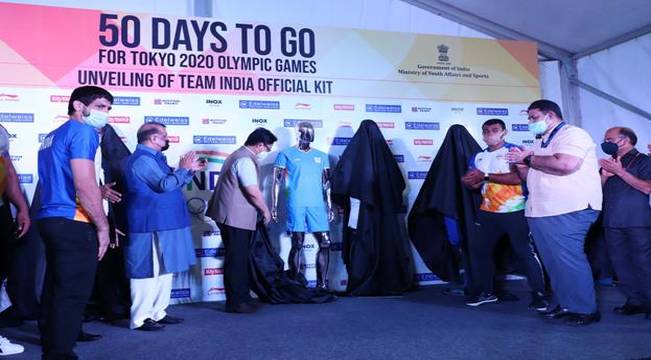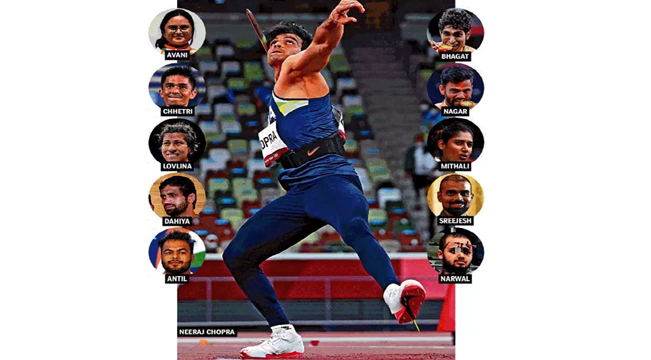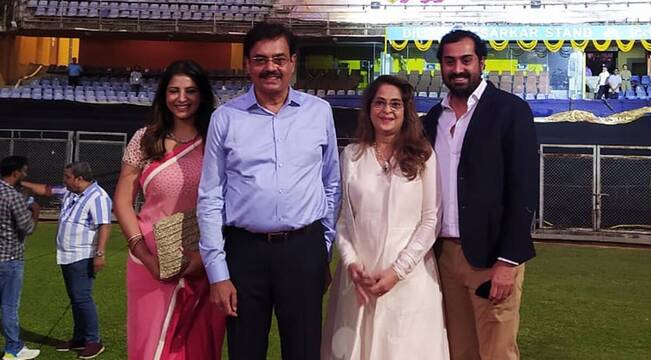New Delhi, April 12, 2023: This year’s polo circuit started with a bang. In fact, in December, there were three polo seasons consecutively going on in the country —in Jodhpur, Mumbai and Kolkata—something which has not happened in the recent past. This bodes extremely well for a sport that is called a national treasure, according to most people, since it has its roots in India but is still considered niche and does not find too many takers among the masses.
“India has a lot to do with polo. India gave modern polo to the world. It was here the British picked up the sport and took it to the entire empire,” says a member of the Jodhpur Polo Organising Committee that organised the 23rd edition of the Jodhpur Polo Season at Maharaja Gaj Singh Sports Foundation Polo Ground in Pabupura, Jodhpur, from December 6 to December 31, 2022, under the auspices of Jodhpur Polo and Equestrian Institute, Jodhpur. This year’s event saw three Indian Polo Association (IPA) tournaments and eight one-day exhibition games.
Indeed, polo is the oldest recorded sport in civilisation, truly adorning the title of a heritage sport, says Maninder S Sethi, founder of La Polo International, a polo magazine that captures the pulsating world of polo and the sportsman spirit that goes with the game, both in the Indian subcontinent and abroad. The magazine reaches out to polo devotees across 169 countries according to the reports published in financialexpress.com.
“The origin of polo is unknown, though it’s said to have originated from Persia but gained popularity in the country with the Mughals. In Manipur and other hilly areas such as Ladakh, it’s still played in its raw format, which is said to be the ancient template of the sport,” adds Sethi.
Polo is one of the world’s oldest known team sports and has also been called the sport of the kings, says Manu Sharma, general manager of Umaid Bhawan Palace, Jodhpur. In November last year, Taj and its iconic grand palace hotel played host to the championship tournament finals of Sir Pratap Singh Polo Cup in New Delhi to commemorate the death centenary year of Sir Pratap Singh, who established Jodhpur Polo in 1889. Singh is remembered as the most revered regent of Jodhpur and the pioneer of modern polo in India.
“While ancient polo finds its origins in Persia, India was the birthplace of modern polo. Since the 19th century, modern polo was played primarily by teams from various principalities as well as some cavalries of the forces. Given its history and the kind of exclusivity it has been synonymous with, it is largely considered a niche sport – though this perspective is witnessing a paradigm shift,” adds Sharma.
As part of the Sir Pratap Singh Polo Cup finals, the national capital witnessed a 14-goal tournament in the backdrop of a memorable presentation of culture and cuisine at the Jaipur Polo Ground.
Riding the wave of time
Things are changing now, albeit slowly. Newer game formats and spectator-friendly settings, along with a subtle increase in the interest and activity around polo, are boding well for the ball game played on horseback— a traditional field sport and one of the world’s oldest known team sports.
“The passion and fandom for this sport is picking up. I am sure it will be more popular among youth in times to come. It is not an easy game. I am optimistic it will become more popular and accessible,” says industrialist Naveen Jindal, who has been playing polo for the past 35 years and owns a polo team called Jindal Panther Polo Team.
Jindal’s team has so far won various tournaments including the Indian Open, Indian Masters, Maharaja Hari Singh Memorial Cup, Maharaja Jiwaji Rao Scindia Cup and the Bhopal Pataudi Cup.
Polo has seen its fair share of rise and fall in the recent past. Thanks to the Indian royalty, it was at its peak before and during the British era. Then, it almost vanished due to the World Wars and later independence of the country. “But thanks to institutions like the Indian Army, the sport was revived, and its glory brought back,” says Sethi of La Polo International.
“Of course, it’s gaining momentum now as we see a large number of international players coming to the country and these numbers are only increasing every year. As of now Rajasthan, Mumbai and New Delhi are the prime and most active polo centres in the country but the sport has also gained momentum in Bengaluru, Hyderabad, Haryana, Gujarat, and Punjab as well. We would be seeing many more new centres being established in the coming years which will not only bring popularity to the sport but also provide access to budding aspirants to the sport,” adds Sethi.
Over the last decade or so, there has been a prolific growth in the interest in the sport, says Sharma of Umaid Bhawan Palace. “It has been gaining significant ground and popularity with equestrians and with those who enjoy leisure sports. This has also led to the development of training centres and clubs spearheaded by qualified instructors. All this has definitely caused a good rise in the number of polo tournaments, which is echoing the bright future of the sport in India,” he adds.
The Living Legacies of the Taj – its iconic palaces, such as the Umaid Bhawan Palace, Jodhpur and Rambagh Palace, Jaipur, owing to their royal heritage have been synonymous with the sport. “Long heralded as a purveyor of Indian heritage, we have been at the helm of promoting the sport through various cups and tournaments over the years in Jodhpur, Jaipur and even in Delhi,” offers Sharma.
“There is a subtle increase of people from all walks of life joining and playing polo. In fact, as time has progressed, the circle has widened to envelope many in its fold— politicians, students, doctors, entrepreneurs, etc,” says the Jodhpur Polo Organising Committee member.
Challenges & way forward
According to the Jodhpur Polo Organising Committee member, polo is a niche sport— niche in the sense that it needs a lot of paraphernalia to play—horses, equipment, player, grounds and all the management around it. “It is a fast, furious, and contact sport; so, it does rub shoulders with being risky. This ultimately makes it out of reach for many people. The cost of playing the game, not to mention, is, of course, another barrier,” the official adds.
Sethi of La Polo International agrees. Polo is a niche and distinctive sport due to many reasons; prominent among them being the horse and the fields to play, he says. “Horses are not only expensive to buy but the upkeep cost is also high, and to play the sport you need to have access to the polo field (which is equivalent to nine football fields). This is a huge chunk of land pocket and not conveniently available at many places/cities. It’s not only expensive but equally dangerous too—only the strong-hearted ones are seen playing or having interest in the high-adrenaline rush sport,” he adds.
Needless to say, much needs to be done. Polo is not cricket, it doesn’t have mass following or appeal. However, like any sport, it lives off its supporters. “Polo attracts and exuberates confidence, being affiliated to the sport, as a player or patron, essentially tells the world that you have ‘arrived’,” says the Jodhpur Polo Organising Committee member, adding: “Governments, NGOs and businesses naturally need to take a more active part in supporting the sporting ecosystem. Polo is not alone, but as a sport which offers so much and has great potential for a country like India, it would be fair to say, more sponsorships and patronage are in order.”
Much work has been done; many business houses such as Jindal Steel, Sona, Rajnigandha, Carysil, etc, to name a few, are already supporting the sport and reaping benefits from it. “It’s a different story that the promoters of these companies are also polo players themselves, but to be able to play and reap rich, albeit indirect, benefits for their respective business is only icing on the cake,” adds the Jodhpur Polo official.
The government is urged for more support, as polo is not only a heritage sport but a great tourism promotion activity too, says Sethi of La Polo International. “Special provisions are required to be created to establish more centres, training centres for players as well as horses. Polo should be included everywhere in the showcase of Indian heritage. For a place like Ladakh, which is among the only two high-altitude polo fields in the world, special focus is required to uplift the sport and establish such places as permanent centres,” adds Sethi, who is also behind The Indian Polo Awards that were introduced in 2021 to recognise excellence within the polo fraternity.
“The Indian Polo Awards is a platform to celebrate the spirit of Polo. Polo is not what you just get to see on the field. On the field is just the final action and what goes behind the field to make that action happens is being recognised and celebrated with The Indian Polo Awards,” explains Sethi, adding: “It’s an initiative to invoke competitiveness among the playing members, to recognise the efforts of unseen heroes, those who make the final action happen, to encourage more and more patrons, sponsors and people to get associated with the heritage sport and to share gratitude with everyone who stood for the sport in any manner.”
A trip down memory lane
Lt Gen Maharaja Sir Pratap Singh was born on October 22, 1845, in the royal family of Marwar Jodhpur and was adopted as the Maharaja of Idar. As the regent of Jodhpur, Singh’s great contributions were the modernisation of the state’s administration and introduction of modern polo along with the raising of the Jodhpur Lancers. The Jodhpur Polo Team, first led by him, dominated the sport from the 1890s through to the 1920s, when just a year before his death he had the satisfaction to witness Jodhpur beat the “invincible” Patiala team. The Jodhpur Lancers under him went on to attain the fabled status as the “Jo Hukums” in WWI, earning many laurels in Europe and Palestine, before creating history at Haifa in 1918, in what is considered the last successful cavalry charge.
Singh established Jodhpur Polo in 1889 with the help of Col Stuart Beatson of Bengal Lancers. In 1897, he travelled to London for Queen Victoria’s Diamond Jubilee with the Jodhpur Polo team, the first India team to play in England. They won many matches at Harlingham and Ranelagh and established themselves as the finest team in that era. Singh presented the Connaught Polo Cup to the Indian Polo Association (IPA) in 1921 to commemorate the visit of the Duke of Connaught to India in appreciation of his contribution to the game, which after independence was renamed after him.
Sir Pratap Singh Polo Cup has been played since then as one of IPA’s most prestigious cups. “In 2022, the tournament commemorated the centenary year of Sir Pratap Singh’s death anniversary. Sir Pratap Singh Polo Cup pays tribute to Sir Pratap and celebrates our custodianship of the legendary Umaid Bhawan Palace, Jodhpur,” says Manu Sharma, general manager of Umaid Bhawan Palace, Jodhpur.



























